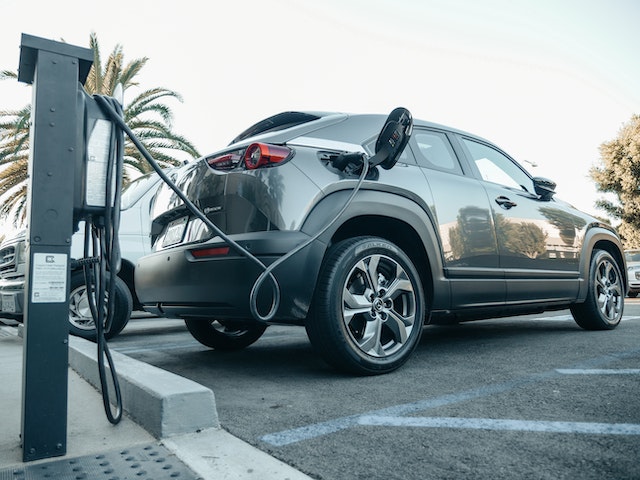
India is rapidly embracing electric vehicles (EVs) as a sustainable and eco-friendly mode of transportation. As the demand for EVs increases, so does the need for a reliable charging infrastructure. In this blog, we will explore how you can easily find nearby EV charging stations in India, ensuring that your electric vehicle is always ready to hit the road.
How to Find EV Charging Stations on Google Maps
Finding electric vehicle (EV) charging stations on Google Maps is a straightforward process. Here’s a step-by-step guide:
Open Google Maps:
- On your computer, open your web browser and go to Google Maps (maps.google.com).
- On your mobile device, open the Google Maps app.
Search for EV Charging Stations:
- In the search bar, type “EV charging Stations Near Me” or a similar query like “Electric Vehicle Charging Near Me“
View Charging Stations:
- Press Enter or tap on the search result related to EV charging stations.
- Google Maps will display a map with various charging station locations.
Explore Charging Stations:
- Zoom in and out on the map to explore different areas.
- Click on individual charging station icons to see more details, such as the station’s name, address, and user reviews.
Filter Options:
- To filter the charging stations based on specific criteria, you can click on the “Filter” button. This allows you to refine your search based on factors like the type of connector, network, and pricing information.
Get Directions:
- Once you’ve found a charging station you want to use, you can click on it to get more information.
- Click on the “Directions” button to plan a route to the selected charging station from your current location.
Remember that the availability of charging stations on Google Maps may vary by location, and not all charging stations may be listed. Additionally, the availability of real-time data depends on the information provided by the charging station operators. Always double-check the information and plan your route accordingly.
How to Find EV Charging Stations on Apple Maps
Finding electric vehicle (EV) charging stations on Apple Maps is also a straightforward process. Here’s a step-by-step guide:
Open Apple Maps:
- On your iPhone or iPad, open the Apple Maps app. Make sure your device is running the latest version of iOS or iPadOS.
Search for EV Charging Stations:
- In the search bar at the bottom of the screen, type “EV Charging Stations Near Me” or a similar query like “Electric Vehicle Charging Near Me“
View Charging Stations:
- Press Enter or tap on the search result related to EV charging stations.
- Apple Maps will display a map with various charging station locations.
Explore Charging Stations:
- Zoom in and out on the map to explore different areas.
- Tap on individual charging station icons to see more details, such as the station’s name, address, and user reviews.
Filter Options:
- To filter the charging stations based on specific criteria, you can look for the filter icon (usually looks like three horizontal lines or sliders). This allows you to refine your search based on factors like the type of connector, network, and pricing information.
Get Directions:
- Once you’ve found a charging station you want to use, you can tap on it to get more information.
- Tap on the “Directions” button to plan a route to the selected charging station from your current location.
Remember that the availability of charging stations on Apple Maps may vary by location, and not all charging stations may be listed. Always double-check the information and plan your route accordingly. Additionally, ensure that your device has location services enabled for accurate results.
Use EV Manufacturer Apps
Many electric vehicle manufacturers have developed their dedicated apps to enhance the EV ownership experience. These apps not only provide valuable information about your vehicle but also include features to locate nearby charging stations. Leading EV manufacturers like Tata, Mahindra, Kia, BYD, Citroen and Hyundai offer comprehensive apps that display charging station locations, charging rates, and even estimated charging times based on your vehicle’s current battery level.
Visit Government Websites and Portals
The Indian government is actively promoting the adoption of EVs and has developed several initiatives to support the growth of the EV charging infrastructure. Government websites and portals, such as the Ministry of Power’s “e-Mobility” portal, provide comprehensive information about the available EV charging stations across the country. These platforms often include interactive maps, allowing you to easily locate nearby charging stations.
Check with Local EV Associations and Clubs
Local EV associations and clubs are valuable resources for EV owners. They are well-connected within the EV community and can provide firsthand information about nearby charging stations. Joining these associations or attending EV meetups can help you connect with other EV owners who can share their experiences and recommend reliable charging stations in your area.
Collaborate with Mobile Apps
There are several mobile apps specifically designed to cater to the needs of EV owners. Apps like ReCharge India allow users to locate nearby charging stations, check their availability, and even make reservations. These apps often provide additional features such as payment integration and charging station ratings, making it easier for EV owners to find and utilize charging infrastructure.
Explore Charging Networks and Service Providers
Numerous companies have emerged as charging network operators and service providers in India. Companies like Tata Power, ChargePoint, and Ather Energy are establishing robust charging networks across the country. These networks often include fast chargers, which significantly reduce the charging time for EVs. Exploring the offerings of different charging network providers can help you identify reliable charging stations in your vicinity.
Seek Assistance from EV Dealerships and Service Centers
EV dealerships and service centers are knowledgeable resources for EV owners. They can guide you regarding the availability and location of nearby charging stations. Additionally, they may offer recommendations based on their experience and customer feedback.
Leverage Social Media and Online Forums
Social media platforms and online forums dedicated to EV discussions can be excellent sources of information. Joining relevant groups or communities on platforms like Facebook, Reddit, and Quora allows you to interact with experienced EV owners who can share their insights and suggest nearby charging stations based on their personal experiences.
Collaborate with Local Businesses
Many businesses, including shopping malls, hotels, and restaurants, are embracing the EV revolution by installing charging infrastructure on their premises. Collaborating with local businesses and establishments can provide you with additional charging options. Check with nearby commercial establishments to see if they offer EV charging facilities and if they are accessible to the public.
Install Home Charging Stations
One of the most convenient options for EV owners is to install a home charging station. By having a charging station at your residence, you can ensure that your EV is always fully charged when you need it. Several companies provide home charging solutions, and availing of these services can provide a hassle-free charging experience.
Conclusion
Finding nearby EV charging stations in India has become much more convenient with the increasing adoption of EVs and the efforts made by the government and private sector. By utilizing online mapping services, EV manufacturer apps, government websites, and the assistance of local resources, EV owners can easily locate charging stations and enjoy a seamless charging experience. As the EV ecosystem continues to evolve, the availability and accessibility of charging infrastructure will only improve. It will support the widespread adoption of electric vehicles across the country.
Read Next Blog:
Importance of Battery Management System in Electric Vehicles







